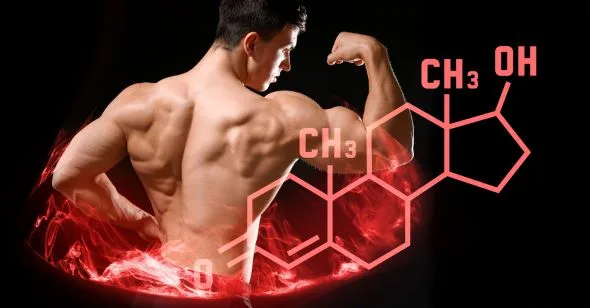Estrogen and Muscle Mass: Balancing Hormones for Optimal Fitness

Estrogen is often seen as detrimental to building muscle mass, but the reality is more complex. Maintaining optimal estrogen levels is key for both men and women seeking to improve strength and physical performance. There are several evidence-based strategies for promoting hormone balance to achieve fitness goals.

How Estrogen Impacts Muscle Growth
While testosterone is the predominant muscle-building hormone, especially in men, estrogen still plays an important role. Estrogen helps regulate fat storage, bone health, and inflammation levels in the body—all factors that influence muscle growth potential.
Too much estrogen can impair strength training outcomes. Estrogen can block testosterone because it is created from testosterone through enzymatic conversion. The enzyme aromatase converts testosterone into estradiol, the primary type of estrogen in the human body. Higher levels of aromatase lead to more testosterone getting converted to estrogen rather than remaining bioavailable. This estrogen activity can then suppress overall testosterone production in the body.
High estrogen has been associated with increased fat storage rather than muscle growth following resistance training. Excessive estrogen may also contribute to hypogonadism, suppressing testosterone production.
However, extremely low estrogen levels can also hinder results. Deficiency negatively affects bone mineral density and the metabolism of glucose in muscles. Moderate estrogen activity is necessary to optimize the impacts of strength training.
Using Anti-Estrogen Supplements
Some people opt to take anti-estrogen supplements to block estrogen’s effects in hopes of building more muscle mass. These include over-the-counter products like Androsurge, which suppresses estrogen in men.
Strategies for Balancing Hormones
Luckily, there are several evidence-based ways to promote optimal estrogen activity:
- Follow a Nutrient-Dense Diet: Consuming cruciferous vegetables may help regulate estrogen metabolism. A diet rich in whole foods also provides compounds that facilitate hormone balance.
- Manage Stress Levels: Chronic stress raises cortisol, which can decrease testosterone and shift estrogen dominance. Stress management facilitates healthy hormonal balance.
- Supplement Strategically: Certain supplements like DIM and calcium D-glucarate may support healthy estrogen metabolism, especially in those with deficiencies.
- Stay Lean: Excess body fat produces aromatase enzymes that can convert testosterone into estrogen and throw hormones out of balance.
Estrogen and Muscle Mass Specifics for Females
Due to natural hormonal fluctuations, optimizing estrogen for muscle building presents unique challenges for women. Strategies like correcting exercise-induced amenorrhea can help counteract deficiencies.
Amenorrhea, an absence of menstruation, signals that estrogen levels have dropped too low, which impairs the body’s capacity for developing stronger muscles. This drop in estrogen disrupts cellular processes needed for muscular growth and repair.
Adjusting exercise and nutrition to maintain regular menstrual cycles ensures estrogen levels are not too low. This includes consuming enough calories to sustain energy demands from training and reducing cardio sessions if they become excessive.
Building Lean Muscle with Balanced Hormones
In addition to diet and lifestyle strategies, certain training approaches facilitate muscle growth by supporting overall hormonal balance:
- Vary between heavy and moderate lifting loads: Training with heavy weights signals the body to produce more testosterone. Lighter sets enhance metabolic capacity.
- Prioritize large multi-joint movements: Exercises like squats and deadlifts stimulate anabolic hormone response more than isolation lifts. Go for compound moves.
- Allow for adequate rest and recovery: Overtraining creates inflammation and raises cortisol. Get at least 48 hours between training the same muscle groups.
When optimized alongside smart training, sufficient estrogen levels impact multiple bodily processes that influence fitness outcomes. While extremely high or low estrogen can hinder results, moderate levels facilitate optimal muscle gain and athletic performance.
Strategic lifestyle and dietary choices that balance estrogen alongside other hormones like testosterone can create the internal environment necessary to pursue the strongest, healthiest physique possible for both female and male athletes.





